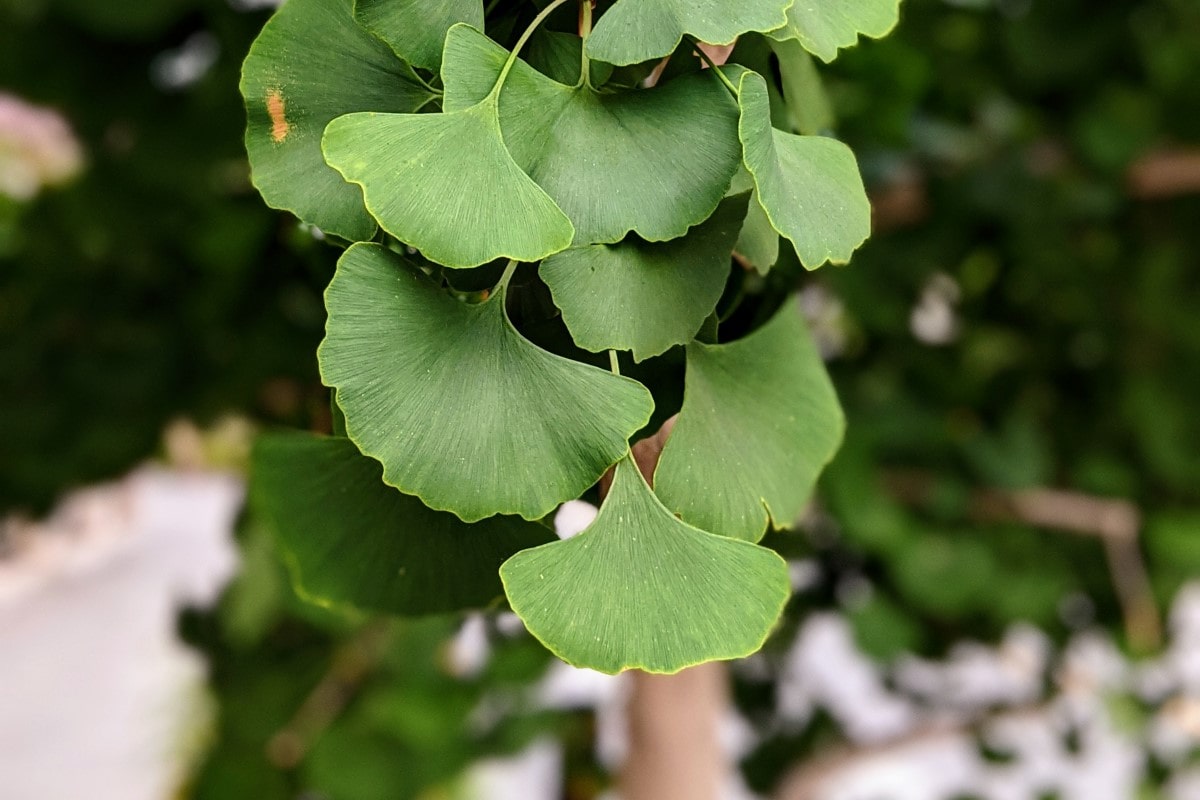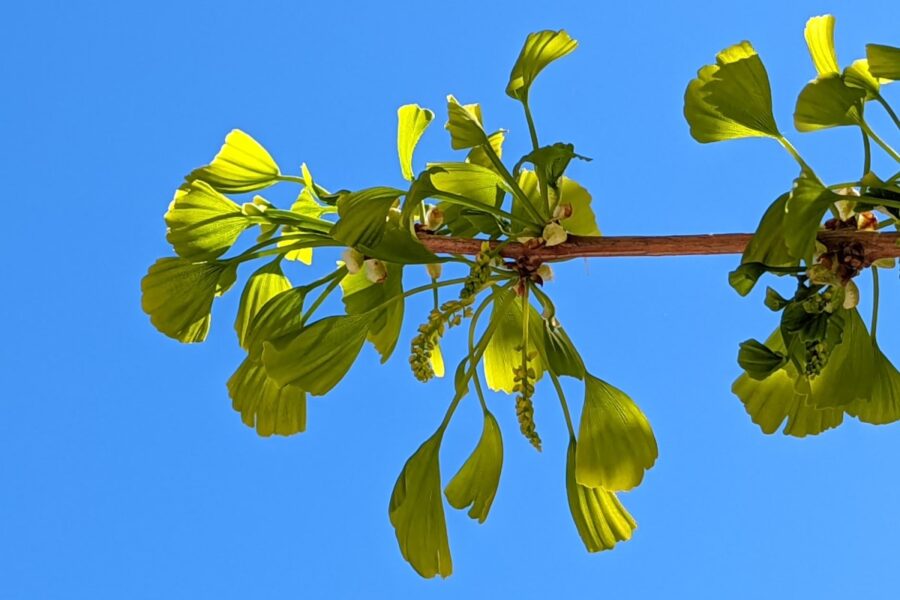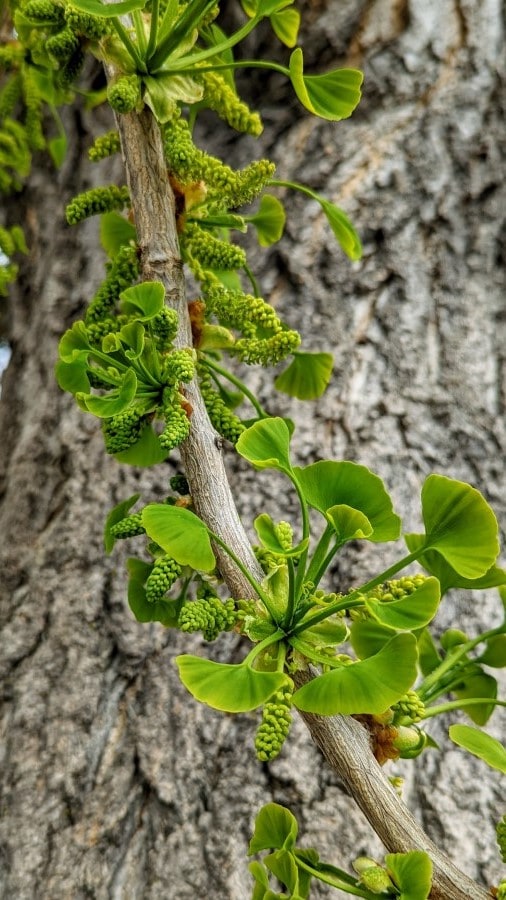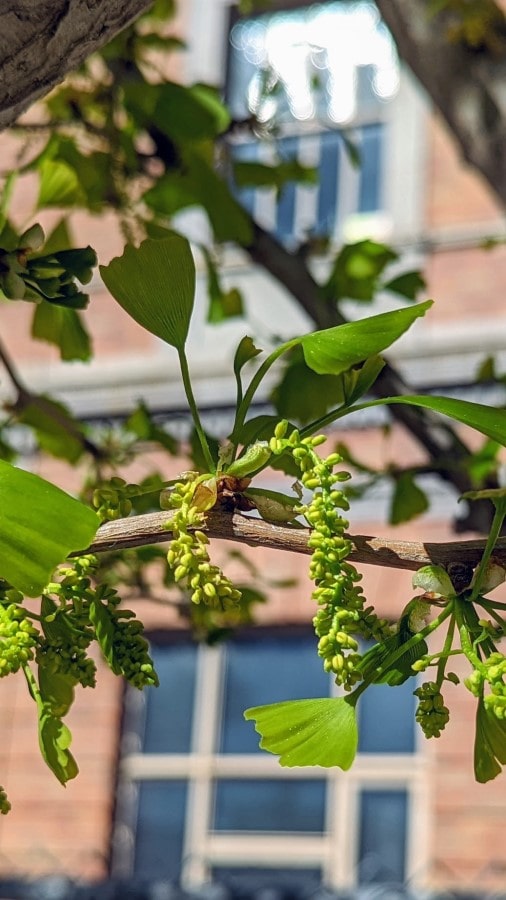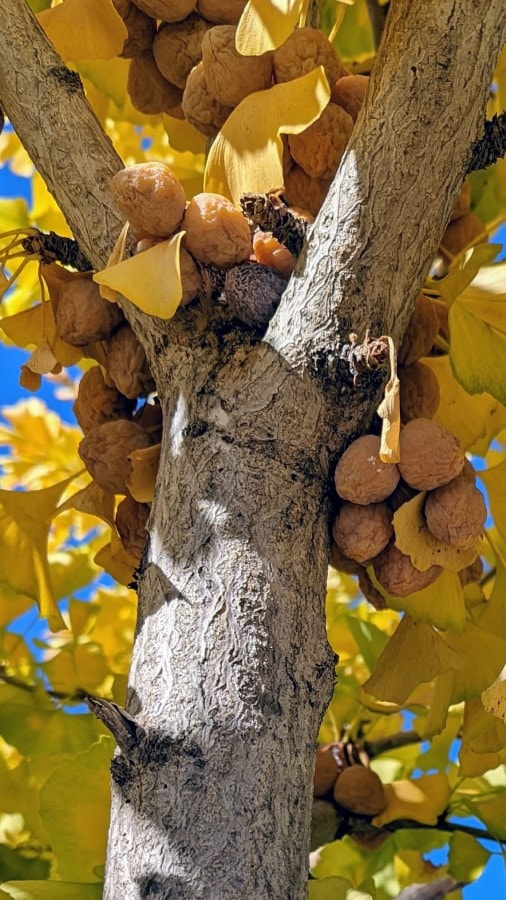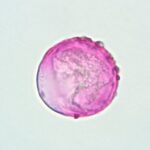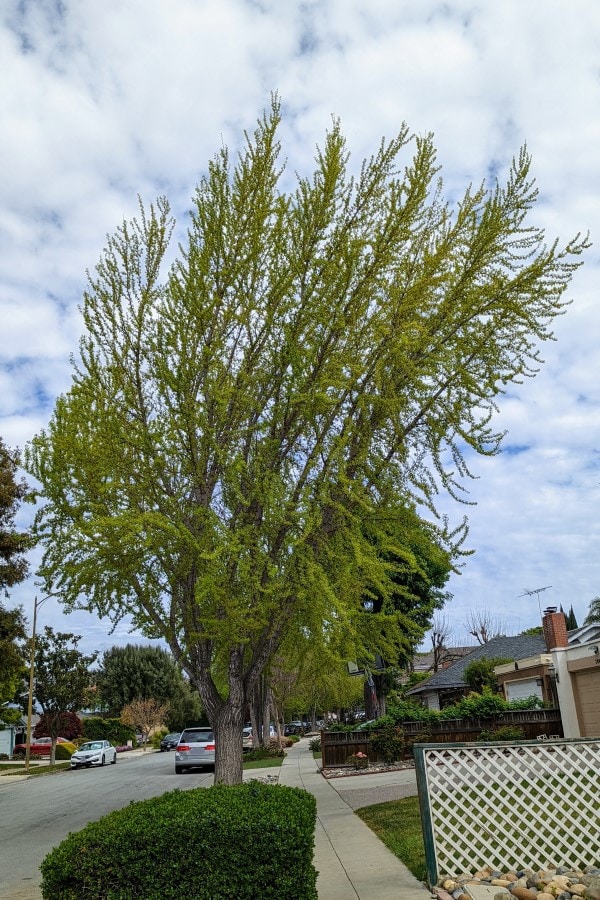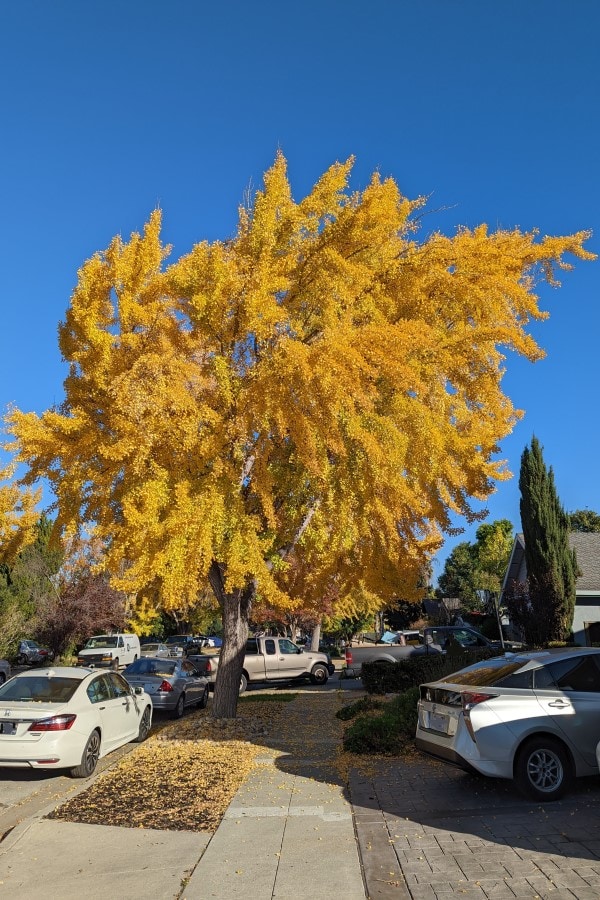In this article, with the help of photos, we will learn about the Ginkgo biloba tree. The tree is sometimes simply referred to as ginkgo or maidenhair.
Although ginkgos are not commonly implicated in allergies, we will still learn how and when their pollen spreads. Why? Because, it is a wind-pollinated plant and if you have a tree in the neighborhood, you are certain to get some exposure. And while ginkgos are not currently recognized as an allergen, I would still like to make this information available, just in case.
Tree facts and figures
| Ginkgo tree profile | Ginkgo biloba |
|---|---|
| Pollen season | Spring |
| Pollination type | Wind-transported; releases abundant pollen in the air |
| Gender | Dioecious: Male and female trees are separate. Most of the city trees in the US are male. |
| Cross-reactivities with other pollen | Not known. |
| Pollen source | 1 to 2 inches long green catkins. |
| Tree leaves | fan-shaped (or elephant’s ears shaped), green during summer, bright yellow during autumn. |
| Tree shape and size | The city trees are generally around 25-30 feet tall and have a spreading canopy. |
How to know if a ginkgo tree is releasing pollen?
Only the male ginkgo trees release pollen. As a matter of fact, most of the city trees are male in the US. The female trees are not planted knowingly because it produces foul-smelling fruit.
During the spring, the new leaves and catkins emerge simultaneously on the tree branches. The male catkins are about 1 inch long and have densely packed anthers that give them a green beady appearance. When the anthers open, the catkins turn slightly yellow and the anthers no longer remain densely packed. (See pictures below)
A male tree releases pollen for about 6 weeks during spring.
The female trees are rare to find in the cities. However, they do exist. This is what they look like:
When do ginkgo trees release pollen?
Ginkgo biloba generally releases pollen during spring between March-15th and April-30th in the San Francisco Bay Area.
Depending on the amount of rainfall and weather, the pollen season could differ slightly from one year to the next. This is why it is important to learn to recognize the trees and their pollen-producing flowers.
However, if you live in the San Francisco Bay Area, you have an easier way out! I do regular tree inspections and air sampling in the area to provide reliable pollen updates on our website
What does the ginkgo tree pollen look like?
Ginkgo tree pollen is unique in that it only has one furrow. The furrow itself is smooth, but the rest of the exine has an irregular and warty surface. Round, ~32 microns, monocolpate.
The pollen is fine yellow powder but airborne individual grains are invisible to the naked eyes.
To see the pollen of other plants and trees, visit our pollen library.
What do ginkgo trees look like?
The ginkgo leaves are its most distinctive trait. The green fan-shaped leaves have a slightly yellow border. The leaves turn bright yellow during autumn.
The trees are deciduous and they lose all their leaves during winter.
The tree forms an oval canopy when young but it starts to spread out as the tree gets older.
The tree bark is brownish-grey and has irregular ridges.
The city trees are generally 25-30 feet tall, but in the wild, they can grow to 80 feet.
Key takeaway
The Ginkgo biloba tree is not known to be a major allergen. However, it does produce pollen in spring, which is wind-transported.
Sources
References
- Allergy Plants by Mary Jelks, M.D.
- Plant identification terminology by James G. Harris and Melinda Woolf Harris (Second Edition)
- Sampling and indentifying pollens and Molds by E. Grant Smith
- The trees of golden gate park and San Francisco by Elizabeth McClintock PhD.
All pictures, unless otherwise credited to another source, are taken by the author and are copyrighted material. The pollen picture is taken in our aerobiology lab using an Olympus compound microscope. The use of pictures is permitted with a link back to the source page on the internet, or, an attribution to allerma.com on the printed material.

